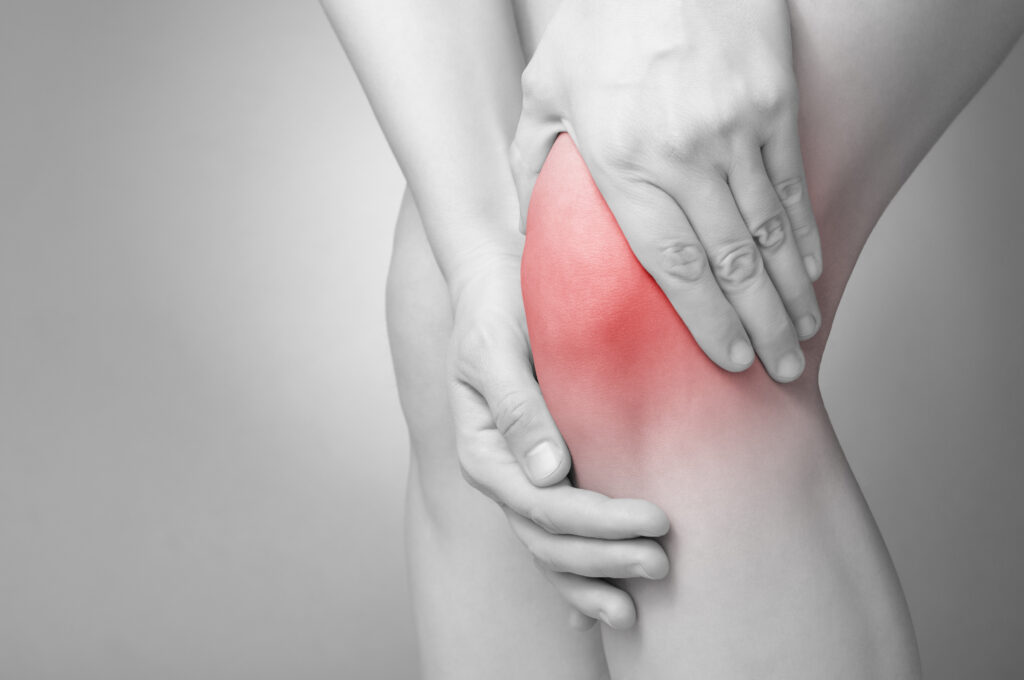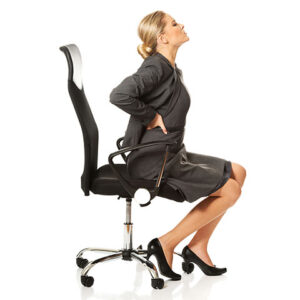Knee pain and symptoms can occur in ANY of the structures listed below. Irritation can cause wear and tear, compression, sprain (ligaments), strain (muscles) incorrect mechanics (joints not tracking properly), inflammation of the blood vessels/ bursa/nerves or fractures (bone) or the symptoms could be coming from either above or below the knee.

Structures of the knee
The knee is a hinge joint and has 4 bones. The Femur, Patella (knee cap), Tibia and Fibula. Between the Femur and Tibia is the meniscus which shock absorbs and cushions the joint. Each joint has an articular cartilage to prevent friction. Holding all these bones together are the ligaments (The 4 main ligaments are ACL and PCL known as the cruciate ligaments; MCL and LCL known as the Collateral ligaments) but there are more. The joints are moved and further stabilised by the muscles (Quadriceps (where the knee cap is housed), popliteus, Gastrocnemius (calves), Hamstrings and a fascial band called the Illio Tibial Band (ITB) which cross the knee joint and attach on to the bones via tendons. Gluteus medius also stabilises the knee as do the mechanics of the foot. The other structures involved in the knee are the blood vessels (veins and arteries) nerves (L3-S1) and bursae.
Diagnosis
A diagnosis can be difficult without the appropriate training. As primary care physicians, each of our practitioners at Future Proof Care, are trained to perform a thorough history and examination, to gain the correct diagnosis.
Knee conditions we have diagnosed and/or support
Patients have presented to our practice with knee pain from a range of causes: overuse, trauma or impact, mal-alignment, instability, or sometimes pain of unknown reason. We have diagnosed and/or supported patients with the following conditions:
- Mechanical Dysfunction
- Osgood Schlatters
- Meniscal tears
- Sprains
- Ligament ruptures
- Baker’s Cyst
- Runner’s knee
- Patella Alta
- Chondromalacia Patella
- Quadriceps Tears/Muscular Tears
- Osteoarthritis
- Knee replacements
- Patella or head of fibular fractures
Some of the above conditions are referred for imaging or further testing to confirm the diagnosis if necessary. Patients are then, when appropriate, supported with treatment and educated on how to manage and rehabilitate their presentation.
Description
Patients may describe their knee symptoms as some of the following. Each description points towards a certain diagnosis. If you use any of these terms, book an appointment with one of our Practitioners at Future Proof Care, Kings Hill, West Malling.
- “Deep ache”
- “Burning sensation”
- Unable to straighten the knee
- Unable to bend the knee
- Popping/clicking
- “Sharp and catching”
- Pins and needles or “tingly”
- Painful to weight bear
- “Sore on twisting”
- Worse in the morning and then eases
- Worse at night – can’t get comfortable
- Swollen or “feels like it’s swollen”
- “Niggly”
- “Feels numb”.
History and Examination
Once the ‘picture’ has been established via a thorough history, we will perform an examination to see how the body is presenting. We will examine the knee as well as the foot, ankle, hip and back. Many mechanical, orthopaedic and muscle tests to diagnosis with clinical clarity of what is going on.
Why Choose us?
Not all Practitioners within the Chiropractic, Osteopathic or Physiotherapy professions treat knee pain both directly AND indirectly. They may focus more on the spine in isolation or the knee in isolation. At Future Proof Care, we treat the body as a whole, thereby getting better results quicker.
We first establish what your pain is, why you have it, what can be done about it to get you relief and return to function as quickly as possible. We are honest and act with integrity, keeping you, your goals and needs at the focus of your care
Don’t let knee pain stop you moving forward in life. Our practitioners go beyond their training in Chiropractic, Osteopathy. We continually attend seminars and stay up to date with the latest research, sports injury and techniques, so our patients can get the best service.


